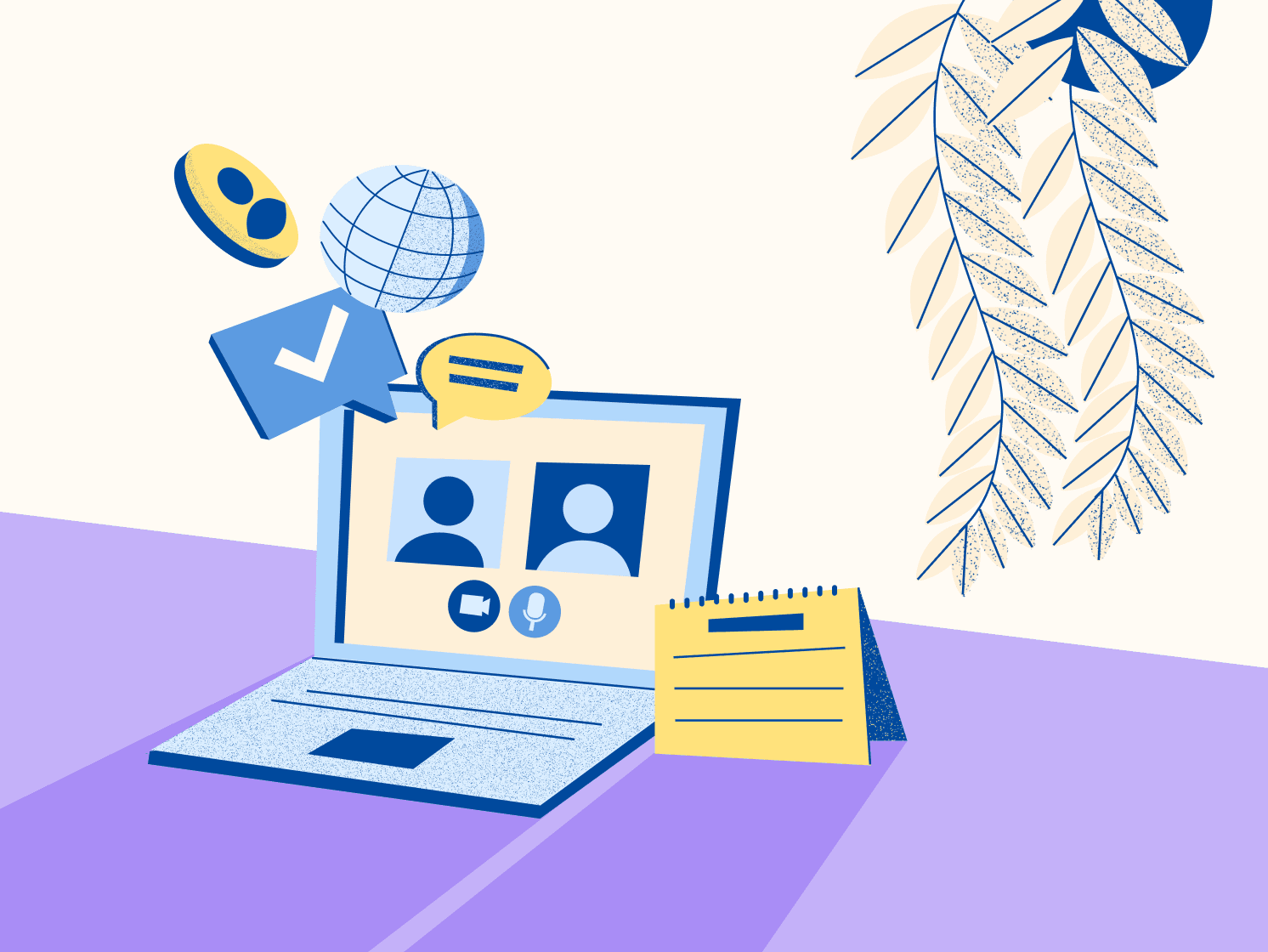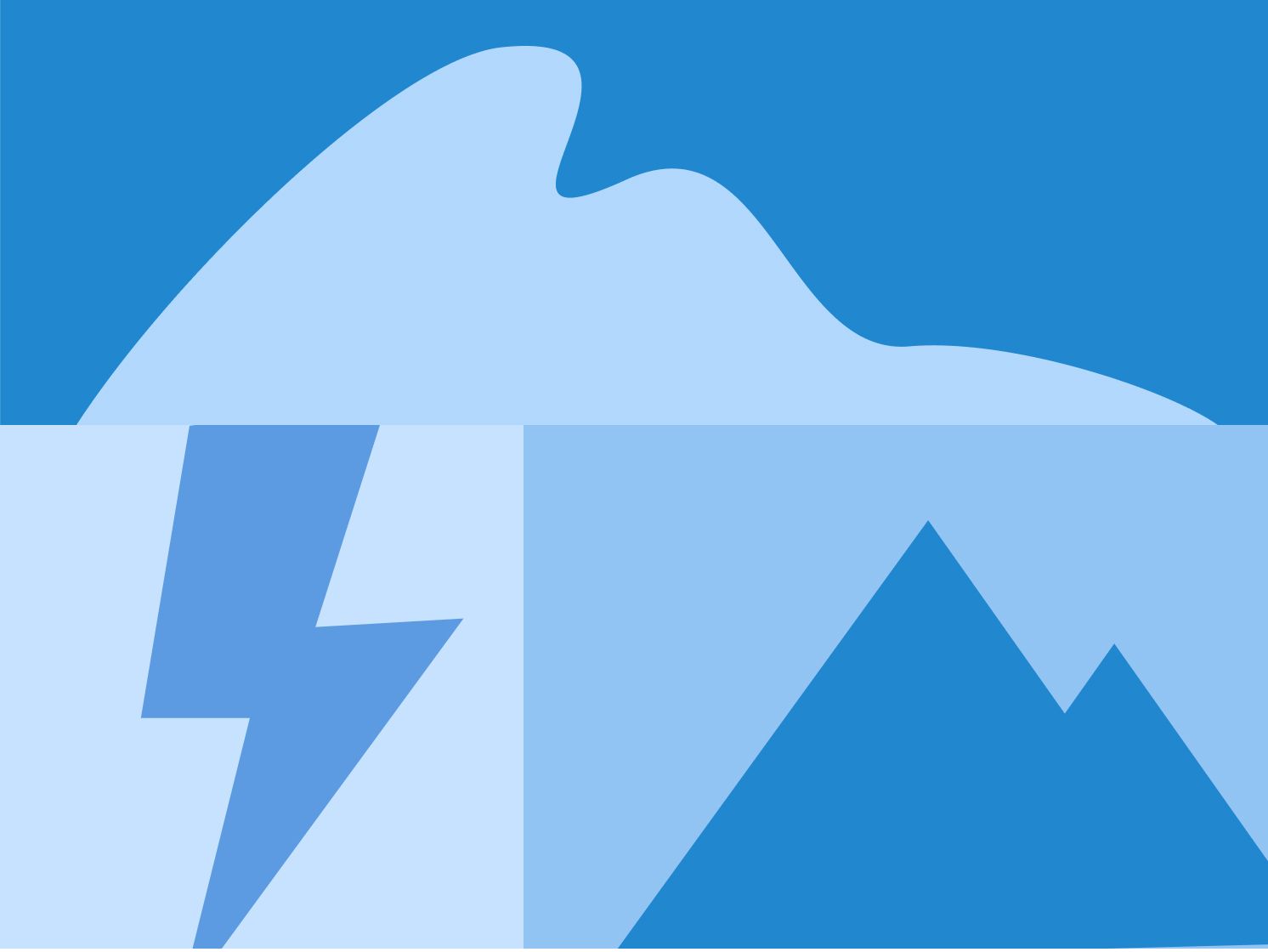Article
5 min read
6 Ways AI Has Changed Global Recruitment: Expert Insights & Tips
Global hiring

Author
Jemima Owen-Jones
Last Update
November 17, 2025

Table of Contents
How AI has advanced the global recruitment process
AI challenges and how to overcome them
Striking a balance between AI and human connection
Key takeaways
- AI is transforming the global hiring landscape by automating repetitive and administrative tasks, allowing recruiters, talent acquisition experts, and HR professionals to focus on higher-value activities such as building relationships with candidates and improving the overall candidate experience.
- While AI is increasingly used to improve recruitment efficiency and reduce bias, it is not a substitute for human intuition and decision-making. Recruiters must balance the use of AI with their own expertise and judgment to make the best hiring decisions.
- For AI to be most effective in a global recruitment context, it should consider cultural differences and local talent markets to source and attract the best candidates from diverse backgrounds and geographies.
The recruiting industry has been quick to embrace artificial intelligence (AI) and automation, leveraging its capabilities to streamline the recruitment process and enhance the candidate experience.
As this new technology continues to evolve and take over routine tasks, the role of recruiters and talent acquisition experts also continues to change.
This article explores insights from industry experts at Metaview, Lilt, Render, and Intrinsic, who discuss how AI is changing the global hiring landscape, the challenges recruiters and talent acquisition experts must overcome, and who will survive the change.
How AI has advanced the global recruitment process
First, let’s dive into how the experts have seen AI advance the global recruitment process.
1. More time for human connection
AI is transforming the day-to-day responsibilities of recruiters. Historically, recruiters have been burdened with tedious and time-consuming tasks, such as screening resumes, note-taking during interviews, reformating these notes to pass on to hiring managers, scheduling interviews, and running background and reference checks.
Now, AI, and automation are taking over many of these repetitive tasks, freeing recruiters up to focus on more human-centric activities such as relationship-building with candidates and critical thinking. This shift has increased efficiency and improved the overall candidate experience, and the quality of hire. It’s also enabled recruiters to become more strategic talent advisors and valuable partners to the other functions they serve.
Siadhal Magos, Co-founder and CEO at Metaview, explains:
“There’s been a bunch of tasks associated with recruiting that people have long complained about frankly and maybe not seen as their favorite part of their job. Then, there are a bunch of other activities that are much more human, like connecting with candidates and hiring managers. All of which suffered as a consequence of the amount of time and energy that those tasks took up…those more drudgerous tasks that recruiters often have to spend a bunch of their energy on are melting away and increasingly being gobbled up by these foundational AI capabilities.”
💡 Top tip: Choose an AI recruitment software that supports language processing and translation and understands cultural nuances. When hiring globally, these features are essential for overcoming language barriers and crafting messages, job postings, and interview questions that resonate with candidates from diverse backgrounds and cultivate culturally sensitive interactions.
🛠️ Tools:
- Lilt’s AI-powered translation service
- Metaview’s automatic AI-powered notes for interviews
- Put candidate screening on autopilot with background checks on Deel
2. Drive data-driven decisions
AI-powered tools can provide valuable insights into the recruitment process and help hiring teams make better-informed decisions and improve their talent pipeline.
For example, companies can use data analysis to identify which certifications or skills tend to perform best within the organization. Armed with this information, companies can develop targeted recruitment strategies and customized job postings to attract and hire the most highly qualified candidates.
Jason Gingrich, Talent Acquisition Lead at Intrinsic, an Alphabet Company, shares his view:
“I hope the industry will start moving towards aggregating more than just the candidate’s background, but also providing information about the companies they worked for, in particular, what stage they are at, what other awards these candidates have won, did these candidates join that company at a time of growth or at a downturn time giving us more data than what we’ve had in the past.”
💡 Top tip: To stand out in a competitive job market, use AI software that provides data-driven insights into global salary trends. This will help you remain competitive in different regions, support salary negotiations, and secure the best talent at the right cost.
🛠️ Tool: Access real-time global market rates with our data-driven Salary Insights Tool
See also: The Remote Team’s Guide to Employee Compensation Strategies.
3. Enhance the candidate experience
AI tools can help you maintain touchpoints with applicants throughout the recruitment process to create a positive candidate experience and protect brand reputation. This is particularly helpful for large companies where it is impossible to engage with every single candidate who applies for a role.
Gwenevere Crary, Founder and CEO at Guide to HR and VP Global People Ops at Lilt, shares:
“We’ve heard so much about companies ghosting candidates or candidates ghosting companies. When I think about my candidate experience, I make sure that no one has that experience. They hear from me even if it’s an automated message.”
“I can’t tell you how many times I have read on Glassdoor or LinkedIn on other social media platforms that people are going through multiple rounds of in-person or online interviews and then being ghosted. That is the worst candidate experience you can ever have,” Gwenevere continued.
💡 Top tip: When selecting AI-powered recruitment software, choose one that takes into account the time zones and remote work preferences of the candidates when matching them with global positions. This will help ensure that the candidates are comfortable with the work arrangements and improve their overall satisfaction with the job.
🛠️ Tools:
- Set up automated responses and self-serve candidate-scheduled meetings with Ashby recruiting integration, available on Deel
- Encourage remote team collaboration and connection with Deel’s Engage Slack plugins
4. Expand talent pools
AI can help companies reach a wider, more diverse talent pool by screening many job applications and candidate profiles in less time, identifying active and passive candidates, and matching candidates with specific job requirements, even if their backgrounds and job titles differ.
Gwenevere (Guide to HR/ Lilt) explains:
“AI has been able to bring me the best candidates that I wouldn’t have been able to find otherwise. The sourcing has opened a whole new world for me. It can source from Github and even identify if someone has been published, providing a more comprehensive view than just their LinkedIn profile. This has allowed me to expand my talent pool and find people with unique skills and capabilities. Moreover, my experience with AI has resulted in a 10x faster recruitment process, making it an invaluable tool for any recruiter.”
💡 Top tip: Prioritize AI-powered recruitment software that analyzes global talent markets to identify regions with high-demand skills. AI can also help ensure diversity in global hiring by identifying job seekers from various backgrounds, cultures, and demographics.
Check out Deel’s State of Global Hiring Report to uncover what countries hired globally, who got hired for what roles, and how the economic climate impacted terminations and salaries.
Global Expansion
5. Strengthen talent brand
Recruiting teams are leveraging AI-powered tools to create visually captivating content that supports their talent brand. Talent brand is the social perception of an organization as a place of employment.
AI can transform complex data into visually stunning graphs, infographics, and presentations that showcase key recruitment metrics such as diversity statistics, employee satisfaction, and growth trends.
AI can also create videos and imagery that depict a company’s culture, values, and working environment, enabling potential candidates to gain a better understanding of what it’s like to work for the organization.
Furthermore, creating compelling visual content highlighting a company’s success stories, employee testimonials, and recent achievements can significantly enhance its branding.
Tiana Johnson, Head of Talent Acquisition at Render, shares:
“I’m not a designer or someone who’s very well-versed in the creative side of brand work. I have ideas and worked with many design teams in the past. There’s a lot of really cool tools around talent brand that are really empowering recruiting teams to move faster because they don’t have to rely on outsourcing, and can just jump in there.”
💡 Top tip: Prioritize AI software that tailors content to different regions and backgrounds, showcases diverse voices and stories in your talent brand, and fosters a sense of inclusion and belonging on a global scale.
🛠️ Tools:
- Transform ideas into content with AI voices using Fliki’s text-to-video tool
- Create AI-generated ads for your landing pages with Promoted
- Tableau can help you visualize and understand the data that supports your employer branding strategy, including data related to your brand reputation through social mentions, employee engagement, and recruitment metrics
Learn more: The Benefits of Global Hiring for Diversity.
6. Indicates candidate proficiency
AI proficiency can be used as an indicator to assess a candidate’s ability to problem-solve creatively.
Jason (Intrinsic) explains:
“Using the available tools to showcase your ability to either work faster or communicate your intentions effectively is always a positive thing. When we consider the job of a software engineer, we would never advise against using resources like Stack Overflow or Google Search for guidance on a particular library framework or language syntax.”
Tiana (Render), adds:
“When I hire recruiters, I ask them what tools they use and to talk me through how they solve day-to-day problems because everyone solves problems differently. It’s important to really understand how they approach things, how they discover, how they think through things, and what their structured thinking is like.”
Gwenevere (Guide to HR/ Lilt), adds:
“People using AI are the ones who will survive the change. You have to be able to figure out how to grow and upscale yourself, and if you’re not doing that, then you’re going to be left behind.”
💡 Top tip: Consider hiring from regions with a concentration of AI talent. Deel’s AI Hiring Report shows that AI, software, and data roles are up 60% in the last year, and organizations hiring those roles grew 59% in the same time frame.
🛠️ Tool: Hire employees worldwide (without a local entity) with the #1 Employer of Record.
AI challenges and how to overcome them
AI promises increased efficiency, improved decision-making, and access to a broader talent pool. However, with these advancements come unique challenges related to bias, resistance, lack of accountability, and the delicate balance between automation and human touch. We explore these challenges in more detail below.
1. Assessment design flaws
As we move towards a world where every job candidate runs their resume and job description through an AI-powered tool, what happens when every applicant appears to be a perfect fit for the job role?
Assessment design plays a crucial role in determining the quality of candidates you attract during the hiring process. For example, if your current assessment process relies heavily on fact-based questions to gauge the candidate’s intelligence, then every candidate will pass with flying colors, and you won’t get a true measure of their capabilities.
Similarly, if the organization seeks the same cookie-cutter qualities as everyone else, it may not attract candidates who truly align with the company’s values.
Siadhal (Metaview) explains:
“Organizations will be forced to be more opinionated about what they truly value and the people they bring on board. This will have a positive impact because many organizations present a culture that does not reflect their true values but rather what they think the world expects from them.”
2. Resistance to adoption
Not everyone in talent recruitment will rush to adopt AI. If you experience resistance among your team, it’s crucial to identify the underlying reason. Understanding your team’s fears and concerns can help you address them and guide them towards embracing the change.
Gwenevere (Guide to HR & Lilt) adds:
“It’s similar to promoting someone to a higher position and encouraging them to delegate tasks or train someone else to take over. There may be apprehension about training someone to replace them, but the ultimate goal is to develop their skills and enable them to handle more complex and strategic tasks.”
The latest wave of technology is markedly different in its ability to adapt to the individual. Unlike old technology that forced people to follow a predetermined structure and become a cog in the machine, this new AI technology is flexible and fits around how you want to work.
Siadhal (Metaview) adds:
“It is now less about changing the way people work. Instead, AI enables people to forget all the boring administrative tasks they were forced to do and let AI take over so they can focus on creating great relationships with other human beings.”
“The adoption rate and the tangible benefits realized by recruiters prove that this technology is changing how they work, leaving them energized at the end of the day with fewer tasks left to complete. If it’s not doing that, we may need to rethink our implementation approach,” Siadhal continued.
2. Lack of accountability
It’s essential that we don’t blindly accept whatever content generative AI tools produce as good without proper scrutiny.
Siadhal (Metaview) explains:
“As we’ve seen with ChatGPT, people were initially impressed by the tool’s ability to write a job description, but we failed to assess the quality of the outcome and whether it helped attract the right talent. Therefore, it’s important to approach generative AI tools with a critical eye and judge their output based on quality and applicability.”
“It’s crucial for everyone in every industry, not just recruiting, to understand that accountability hasn’t changed. It still falls on us and our teammates to bring great people into the company and provide candidates with a great experience. Even as we outsource some of our work to AI, we must remember that we’re still accountable for the parts we outsource. There will be collateral damage and mistakes along the way. We must understand that we’re still accountable for those mistakes,” Siadhal continued.
3. Unconscious bias
The application of AI can be broadly categorized into three areas: automation, detection, and decision-making. Automation helps us eliminate mundane, uninspiring work. Detection enables us to uncover information that was previously hidden. Decision-making, however, requires careful consideration and due diligence, especially when we entrust AI models to make important decisions on our behalf.
There are some examples of when, in society, we lacked the maturity to understand how to use these models correctly. There’s the story of the AI model used in the hiring or recruitment process that had a bias against candidates who played volleyball. This bias occurred because the AI model associated volleyball with females due to a lack of male employees who played the sport at the company. As a result, the AI system disproportionately rejected female candidates who listed volleyball on their resumes.
Siadhal Magos (Metaview) explained:
“We need to have an open mind towards experimenting with these AI tools, especially in this more automation and detection bucket of activity. But we must adopt a more strenuous look at things when using AI for decision-making. A fine-tooth comb look at the product makes more sense here.”
Another challenge is ensuring that the job description itself is free from any human biases. Many recruiting tools use AI to source candidates based on the job description, but if the job description has unconscious biases in it, the AI sourcing will also be biased.
Tianna (Render) explains:
“Recruiting at its core is an art of matchmaking. You really need humans to be a part of the decision. How you network and how you match people is really like a marriage. You’re trying to make that long-term fit.”
“Coming from an indigenous background—I’m Native Hawaiian, for example—and the way we story-tell our history is not through keyword matching to a job description. Instead, the way that we tell where we came from, the things that we’ve done, and the impact that we’ve made is done using a creative narrative. I don’t tend to use bullet points or explain how ROI is tracked."
“If you’re using AI to make the decisions on how my resume is going to get through, I’m probably not. going. to get through to the right companies. But if you have a human looking at the way that I’m storytelling my history and the work that I’ve done and the impact that I’ve made, it takes an extra set of eyes to really see the value in that. They will hopefully match me with the right company,” Tianna continued.
Jason (Intrinsic) added:
“It is essential to have human involvement in the recruitment process to ensure that candidates are not excluded due to their background, ethnicity, or other factors. AI can have a significant impact on certain communities, and it’s important to use it ethically and with human oversight. By doing so, we can create a more inclusive and diverse workforce that benefits everyone.”
Maintaining a balance between AI systems and human expertise is crucial in recruitment. AI systems excel at pattern matching, but relying solely on this technology can lead to a lack of human insight, and overlook the internal culture of a company.
✨ Free resources: Job description templates.
Striking a balance between AI and human connection
AI’s role in the recruitment process is increasing. However, it’s essential to recognize that AI cannot replace the human intuition and decision-making required when evaluating candidates. Recruiters must strike a balance between leveraging AI’s capabilities while still providing the human connection that is crucial in building trust and conveying company culture.
Jason (Intrinsic) explains:
“I fully support using these tools, as they can help us focus on the human element of recruiting. It’s not just about filling roles or closing deals based on compensation. We must take the time to understand what is important to each candidate and align their values with the organization’s values. This includes intangible things like career development and the people they will work with.”
“When we lose sight of the human element of hiring, we miss the opportunity to use talent acquisition as a competitive advantage. We should strive to be true talent partners and advisors, building best-in-class teams across all functions,” Jason adds.
Tianna (Render) concludes:
“AI has changed the landscape of the future of people and talent. Those who embrace AI and explore the best tools to help talent operations, buy people’s time back, and scale will succeed as the next generation of recruiters or talent leaders.”
Next steps
- 📚 Read our article on Global Recruitment: Must Have Licenses & Regulations
- 🎬 Watch our Global Hiring Summit to uncover best practices across the entire hiring process, from sourcing top talent and onboarding to global payroll and compliance

Jemima is a nomadic writer, journalist, and digital marketer with a decade of experience crafting compelling B2B content for a global audience. She is a strong advocate for equal opportunities and is dedicated to shaping the future of work. At Deel, she specializes in thought-leadership content covering global mobility, cross-border compliance, and workplace culture topics.












